The best Brave atlanta braves jersey men red s third basemen since 1990
August 19, 2022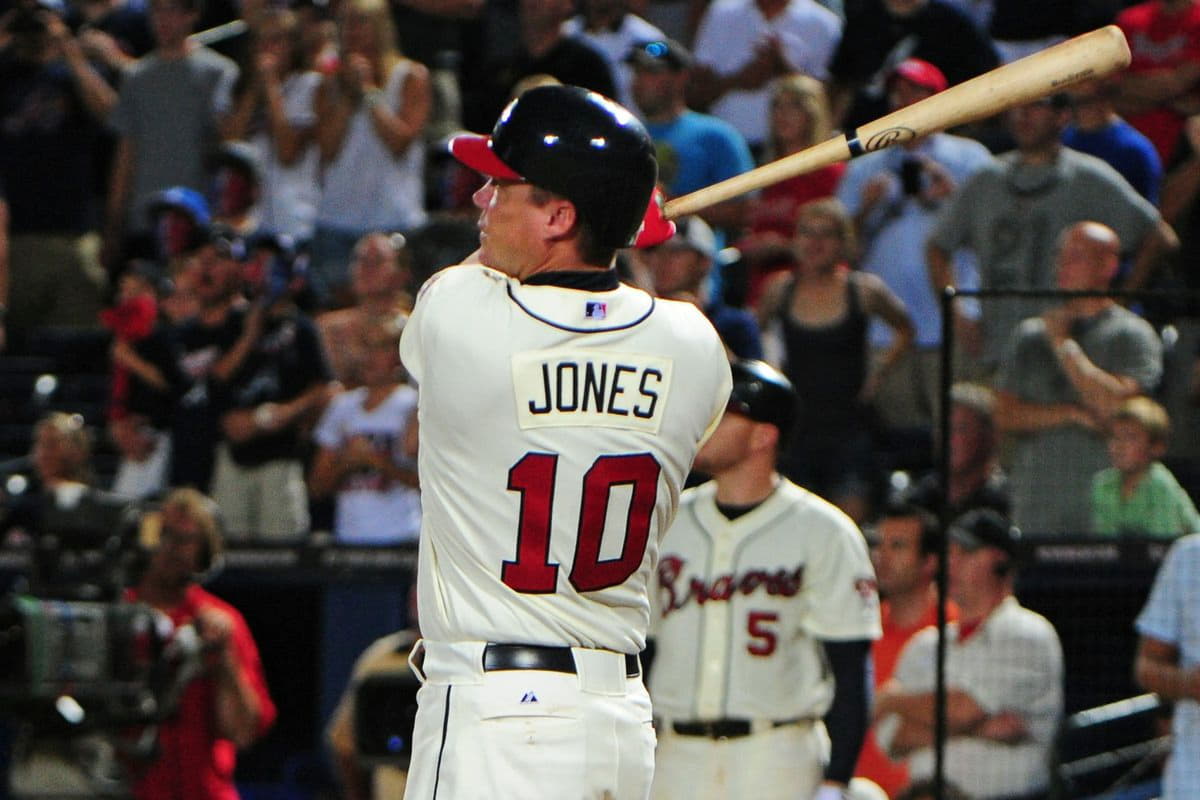

Given that Chipper Jones is the best position player to suit-up for the Atlanta Braves since 1990, it is little surprise that he is far-and-away the team’s best third baseman of the last three decades.
A Hall of Famer, a National League MVP, an eight-time All Star; Jones easily tops this list and that is with all due respect to Terry Pendleton, who also former MVP, yet a distant second in terms of this retrospective ranking.
This series has focused on players in this MLB Throwback Jerseys most-modern era of Braves baseball, with a look back at the players who graced the region with their skills since the team moved to Atlanta.
The lineage of third basemen with the Braves organization deserves an expansion of the timeline, so join me in this sojourn of an amazing eight-decade run of third basemen in the organization.
With Austin Riley’s recent contract extension, it is a safe bet that he will be the team’s third baseman until at least 2027, despite his defensive shortcomings. With that future end point in mind, rewind to 1947 for the start of what has been a staggering amount of consistency from the hot corner.
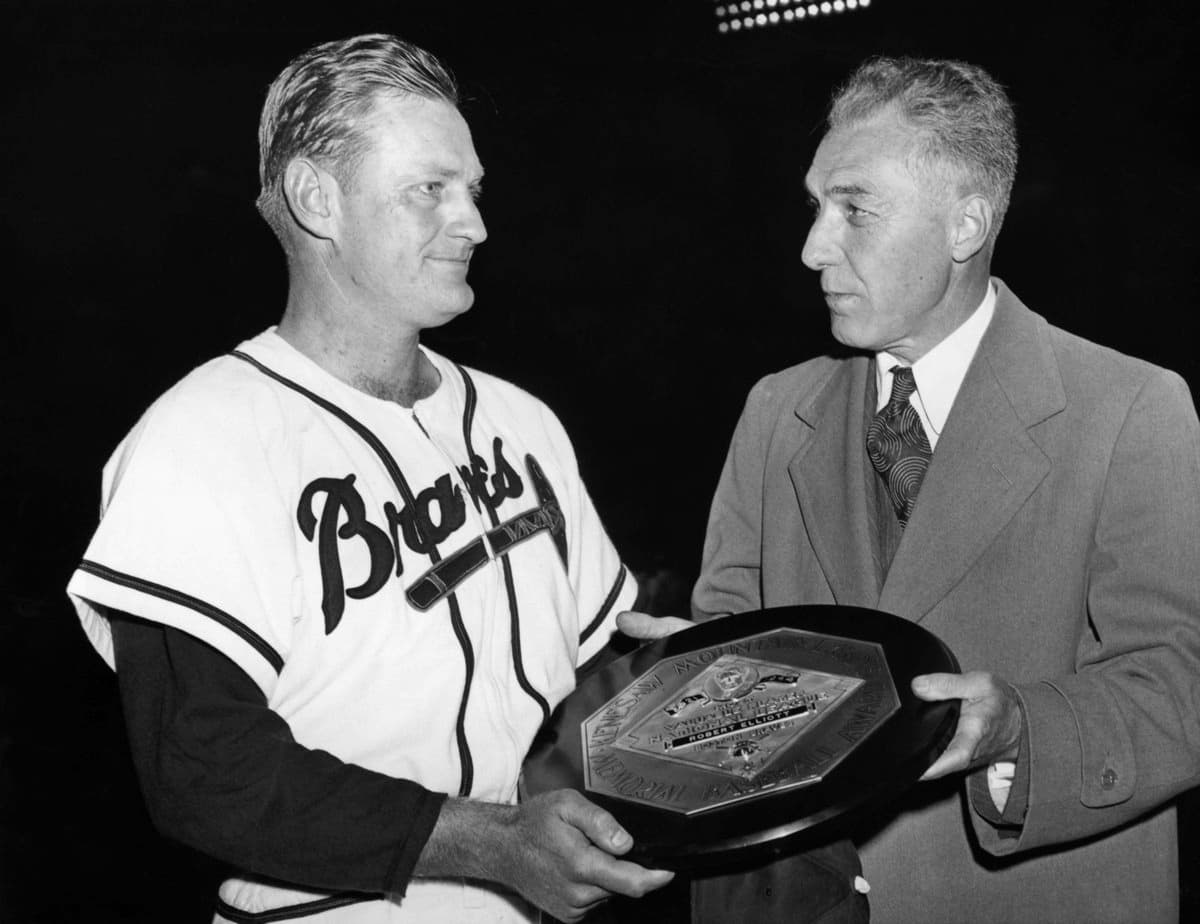
Bob Elliott arrived in Boston to take over at third base prior to the 1947 season. A four-time All Star with three top-10 MVP seasons under his belt while with Pittsburgh, Elliott had the best season of his career in his first of five campaigns with the Braves.
Elliott won the NL MVP award in 1947 topping Cincinnati pitcher Ewell Blackwell in the voting. Elliott slashed .317/.410/.517 for the season with 22 home runs and 113 RBI. He would be a three-time All Star with the Braves and pick-up votes for MVP in two other seasons.
Elliott was replaced at third in 1952 – the team’s final season in Boston – by a 20 year-old from Texarkana, TX.
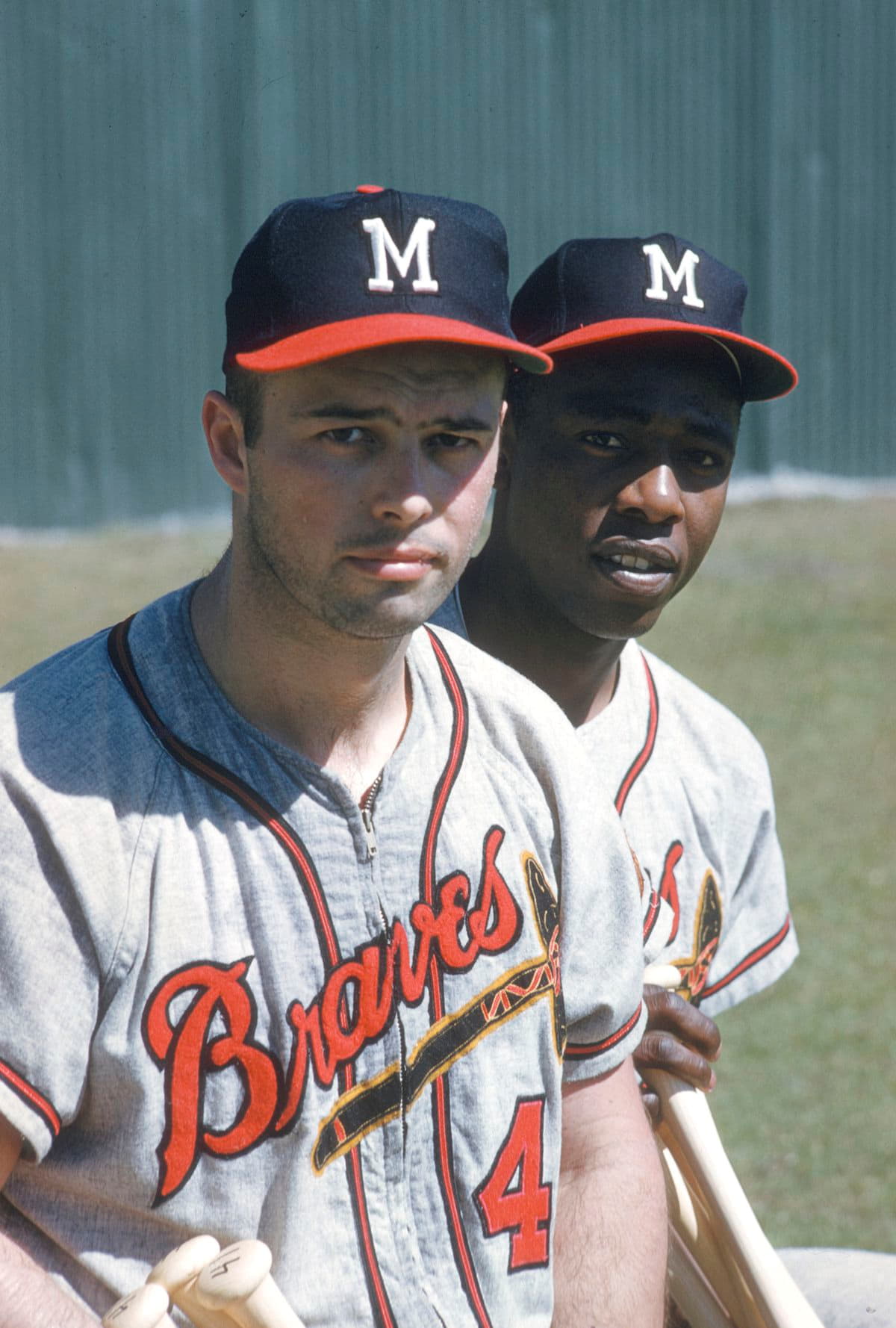
Finishing third in the Rookie of the Year award, Eddie Mathews began his first of 15 seasons as the Braves primary third baseman by playing in 145 games and picking up down-ballot MVP votes before the team moved to Milwaukee in 1953.
That 1953 season would be one of the best of his career. He would earn his first All Star game selection and finish second in the NL MVP voting to Brooklyn catcher Roy Campanella despite leading the league with 47 home runs.
The Hall of Famer appeared in 12 All Star games and was a key part of the 1957 Braves World Series winning team. Although he never won an MVP award, he finished second twice – including the 1959 season when he again led the NL in home runs, with 46, but finished just behind the legendary Cub, Ernie Banks.
With the Braves, his career spanned through the team’s time in Milwaukee, and when the organization moved to Atlanta in 1966, it was Mathews who suited up as the team’s third baseman. In his age 34 seasons, Mathews played in 134 games and hit a modest .250/.341/.420. It would be his final season with the organization before spending part of a season with Houston before being traded to Detroit where he was a member of the Tigers’ 1968 World Series championship team in what would be his final season.
For the Braves, Mathews in in the inner circle of team greats. His bWAR places him fourth all-time behind only Hank Aaron, Kid Nichols and Warren Spahn with 94.1 bWAR. To put that in perspective for fans of current-day Braves, that total is more than twice what Freddie Freeman accrued while with Atlanta and ahead of Chipper Jones by almost nine bWAR.
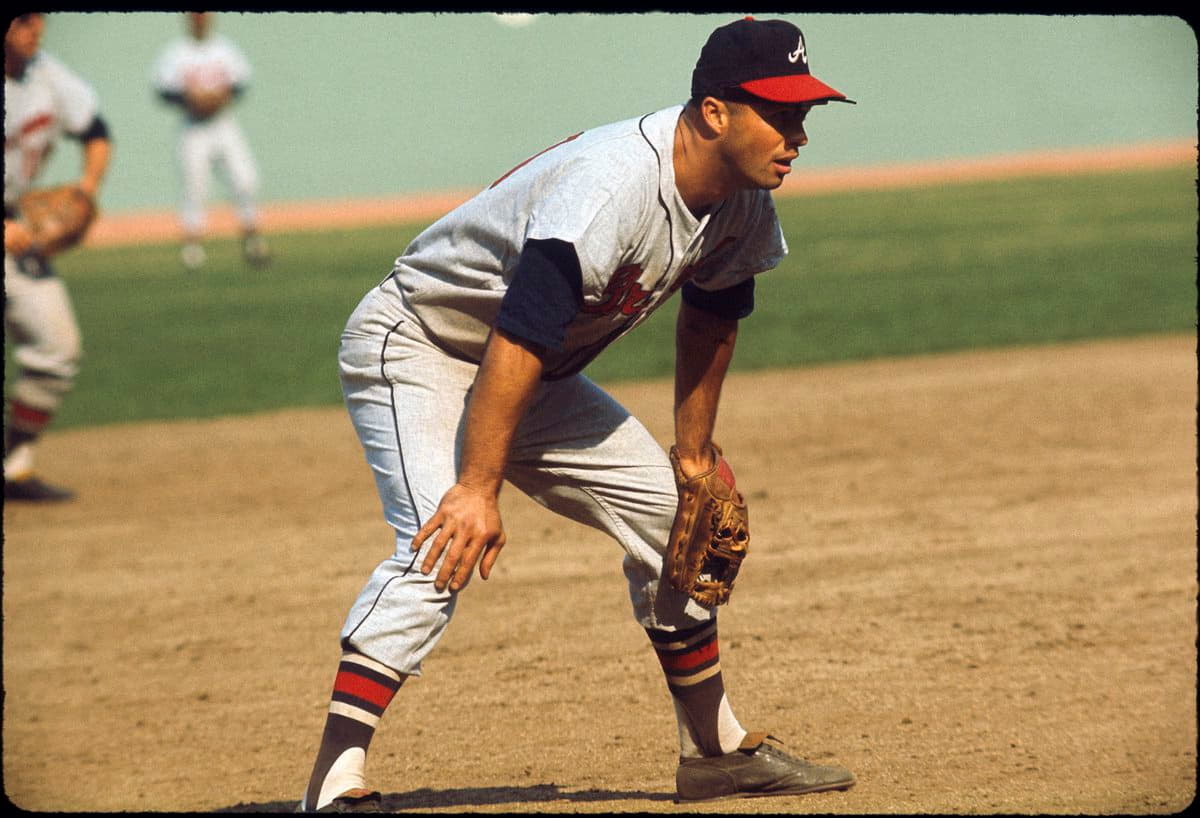
In those 15 season with the Braves, Mathews hit 493 home runs (he totaled 512 for his career), collected 2,201 hits, scored 1,452 runs and drove in 1,388. For his Braves career he slashed .273/.379/.517 for an .896 OPS and 145 OPS+. He led the NL in home runs twice and walks four times while picking up MVP votes in 10 seasons.
Mathews is also the only player to play for the Braves in Boston, Milwaukee, and Atlanta.
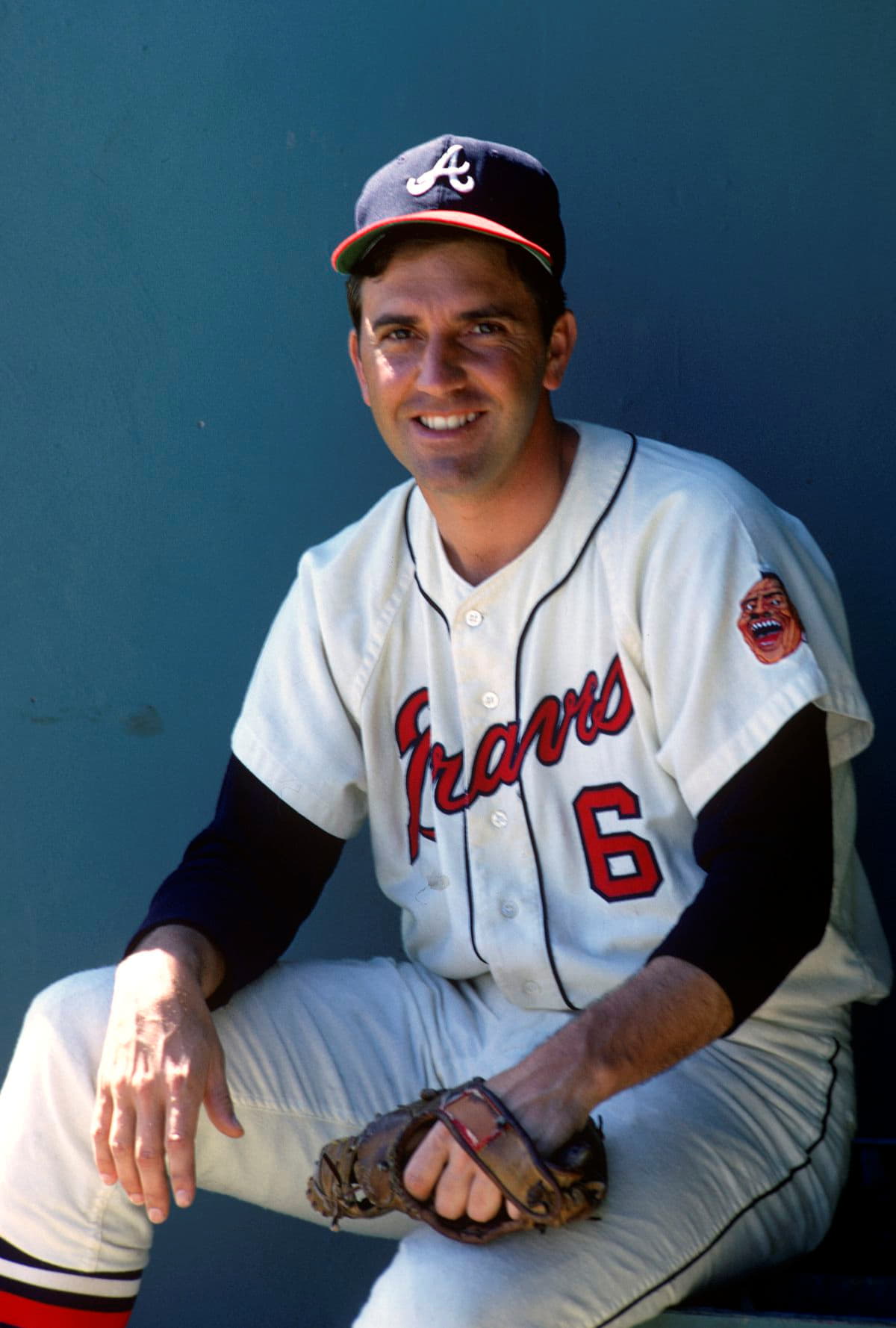
Replacing Mathews in 1967 was long-time Yankees infielder Clete Boyer. He was the primary third baseman for the Braves for four season, earning the only MVP votes of his career in 1967 and winning his only Gold Glove in 1969, which is notable because Boyer was an excellent defender at third.
With New York and Kansas City, Boyer played during the time that all-time defensive great Brooks Robinson won 16 AL Gold Gloves in-a-row at third. After moving to the NL, Boyer’s win was sandwiched between Ron Santo and Doug Radar, who each won four consecutive NL Gold Gloves.
For as good of a player as Boyer was, he wasn’t the best in his family, as his brother Ken Boyer was an 11-time All Star, NL MVP, and five-time Gold Glove winner as a third baseman.
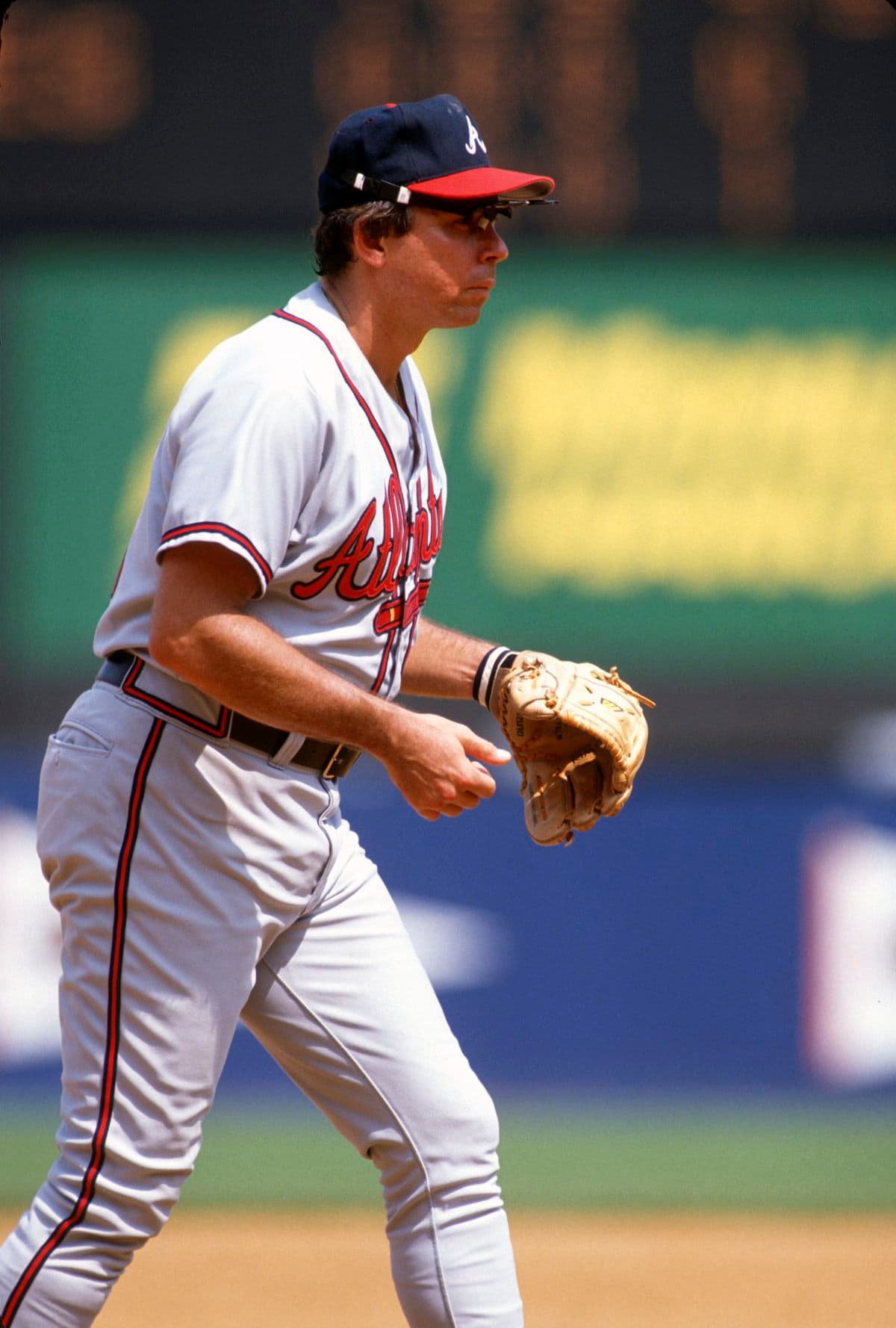
In 1971, Darrell Evans became the Braves’ primary third baseman after replacing Clete Boyer. Evans led the NL in walks in 1973 and 1974 and was an All Star for the only time in his Atlanta career in ‘73. During his All Star season, he belted 41 home runs and drove in 104 runners while posting a career best .959 OPS and 156 OPS+. Combined with his above average defensive, he sported an amazing 9.0 bWAR for the ‘73 season.
Evans would return to the Braves in 1989 at age 42 appearing in 107 games. It would be the final season of a 21 year career that included nine season with Atlanta, eight years with San Francisco, and five seasons with Detroit, where he led the AL with 40 home runs in 1985.
After the Braves traded Evans to the Giants during the 1976 season, it was almost two years before Bob Horner would take the reigns at third base for Atlanta from his debut in 1978 through the 1983 season.
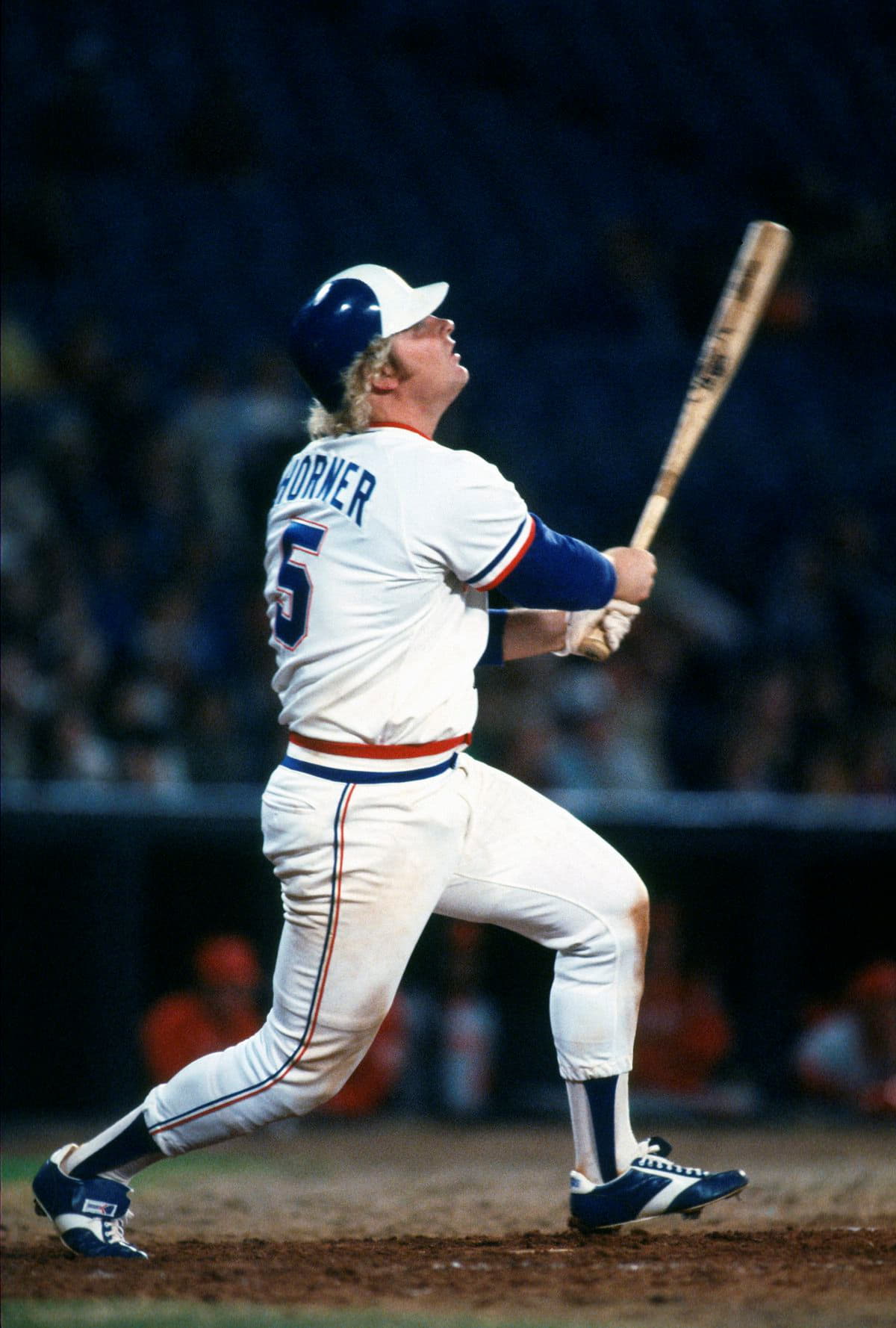
Horner, the ‘78 NL Rookie of the Year, notoriously went straight to Atlanta after being drafted by the team first overall in the June 1978 draft out of Arizona State University.
Although Horner’s time with Atlanta was hampered by injuries, the slugger hit 215 home runs in only 960 games with Atlanta during parts of nine seasons. That included five seasons of 27 or more home runs. He had an OPS+ of 127 with Atlanta, including a career best 143 in 1983.
An All Star during Atlanta’s 1982 NL West Division-winning season, Horner only played in more than 140 games twice – in ‘82 and in his final season with the team in 1986. It was during that final season in Atlanta that he blasted four home runs in a single game against the Expos.
A free agent after the 1986 season, Horner was caught in MLB’s overall issues with collusion, causing Horner to spend his age 29 season playing for the Yakult Swallows in Japan in 1987.
Although Horner would return in MLB in 1988 with St. Louis, injury issues – this time with a shoulder – saw his career end that season despite being only 30 years old.
Notably, Horner never played a game in the Minor Leagues during his career.
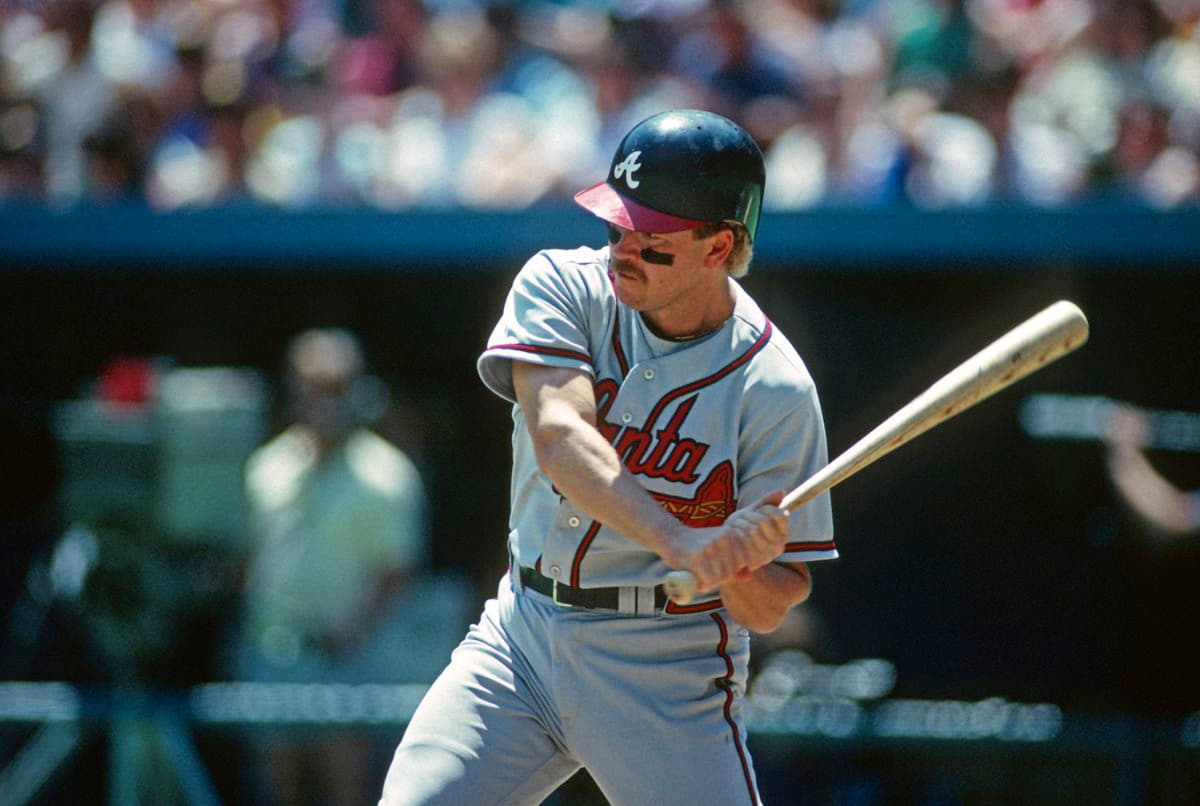
Ken Oberkfell was acquired by the Braves in June 1984 to become of the team’s third baseman after Horner broke his wrist driving for a ball at third.
Oberkfell, who spent 16 seasons in MLB, was a quality player for the Braves in parts of five season until he was traded to Pittsburgh in 1988. As the team’s primary third baseman, Oberkfell provided 5.5 bWAR, including 3.4 in 1986, one of the best seasons of his career.
One of the more notable moments of Oberkfell’s time with Atlanta was during his final season with the team when he singled with two out in the ninth inning, breaking up Houston Astros pitcher Mike Scott’s no-hit bid on June 13, 1988.
In 1991, Terry Pendleton would make his mark on Braves history with his MVP 1991 season, the first of four seasons as the team’s third baseman before future Hall of Famer Chipper Jones would take over until 2012, save two season when the Braves brought back former prospect Vinny Castilla to play third.
From 1947 until 2012, eight Braves third basemen were the team’s primary player at the position in all but seven seasons. It boggles the mind to think that in 58 of 65 seasons, one of eight players were at the helm of the hot corner.
Going back to Austin Riley, if we project him being the Braves third basemen until 2027, then we could see nine third basemen be the primary player at the position for 66 of 80 seasons. That this rare consistency at a single position for any organization.
I’m sure Sarah Langs could break that down further, but I am no Sarah Langs.
Now it is time to dive into the most-modern era of Braves third baseman. A reminder that most of the data is from Baseball-Reference, which isn’t perfect, but works fine for this purpose. To qualify for this ranking, a position player must appear in 65 games during a season at the position being reviewed. For that reason, the 2020 is omitted from the rankings but will be discussed in the retrospective.
Best Single Seasons Since 1990
Here are the best single seasons by a third baseman for the Braves since 1990.
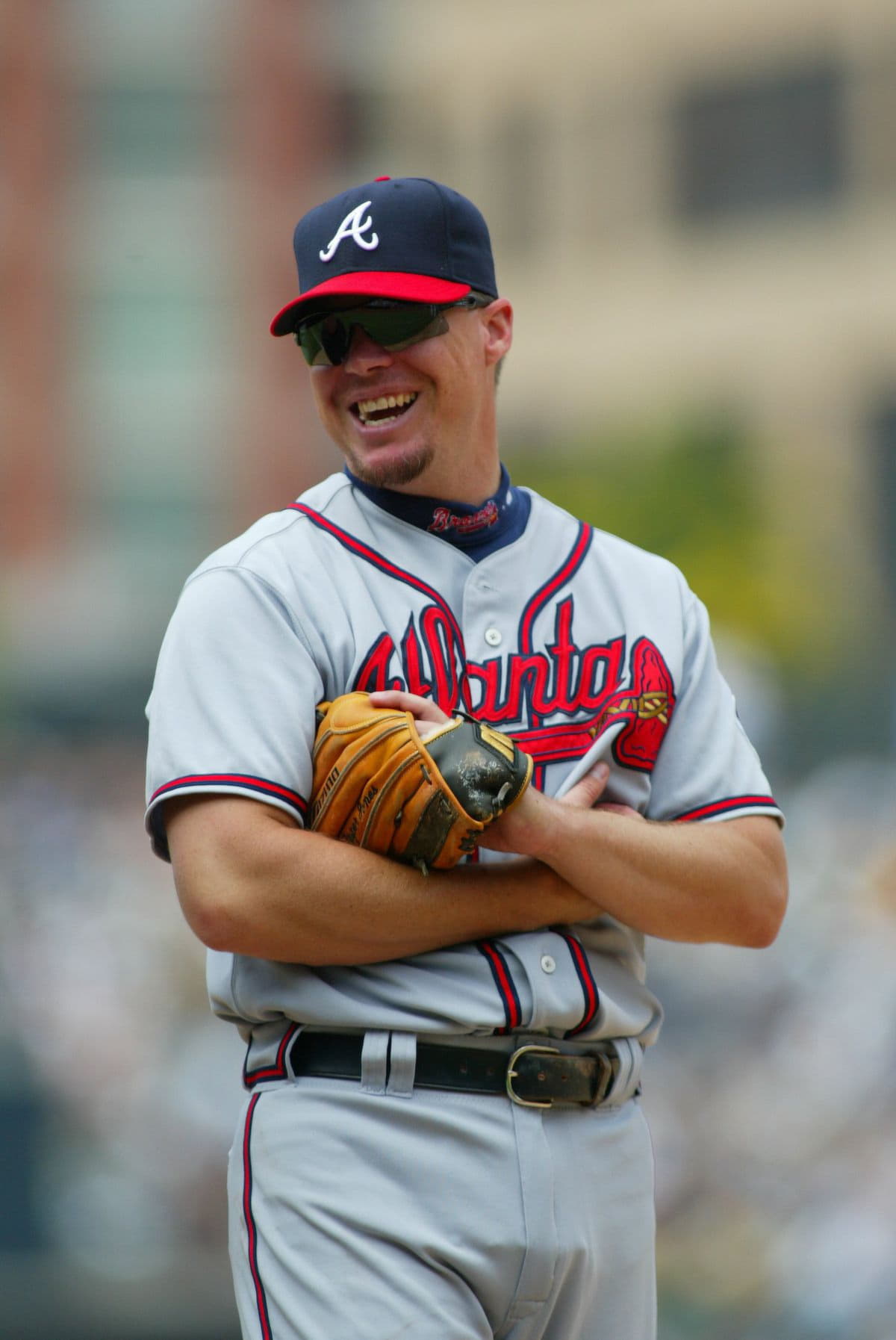
Top 5 Seasons, by bWAR
Chipper Jones, 2007, 7.6
Ch atlanta braves jersey 3xl ipper Jones, 2008, 7.3
Chipper Jones, 1998, 7.0
Chipper Jones, 1999, 6.9
Chipper Jones, 1996, 6.2
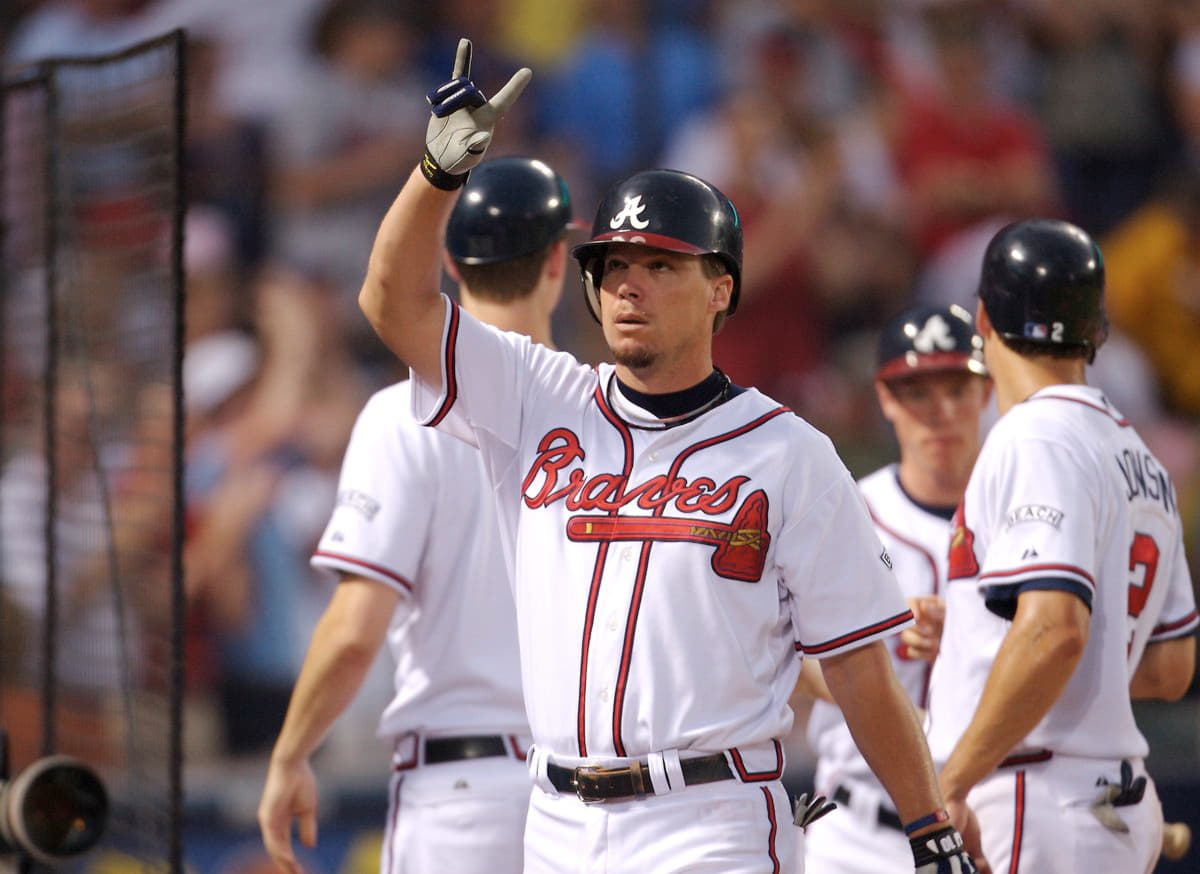
Top 5 Seasons, by OPS+
Chipper Jones, 2008, 176
Chipper Jones, 1999, 169
Chipper Jones, 2007, 165
Chipper Jones, 2001, 160
Chipper Jones, 2006, 154
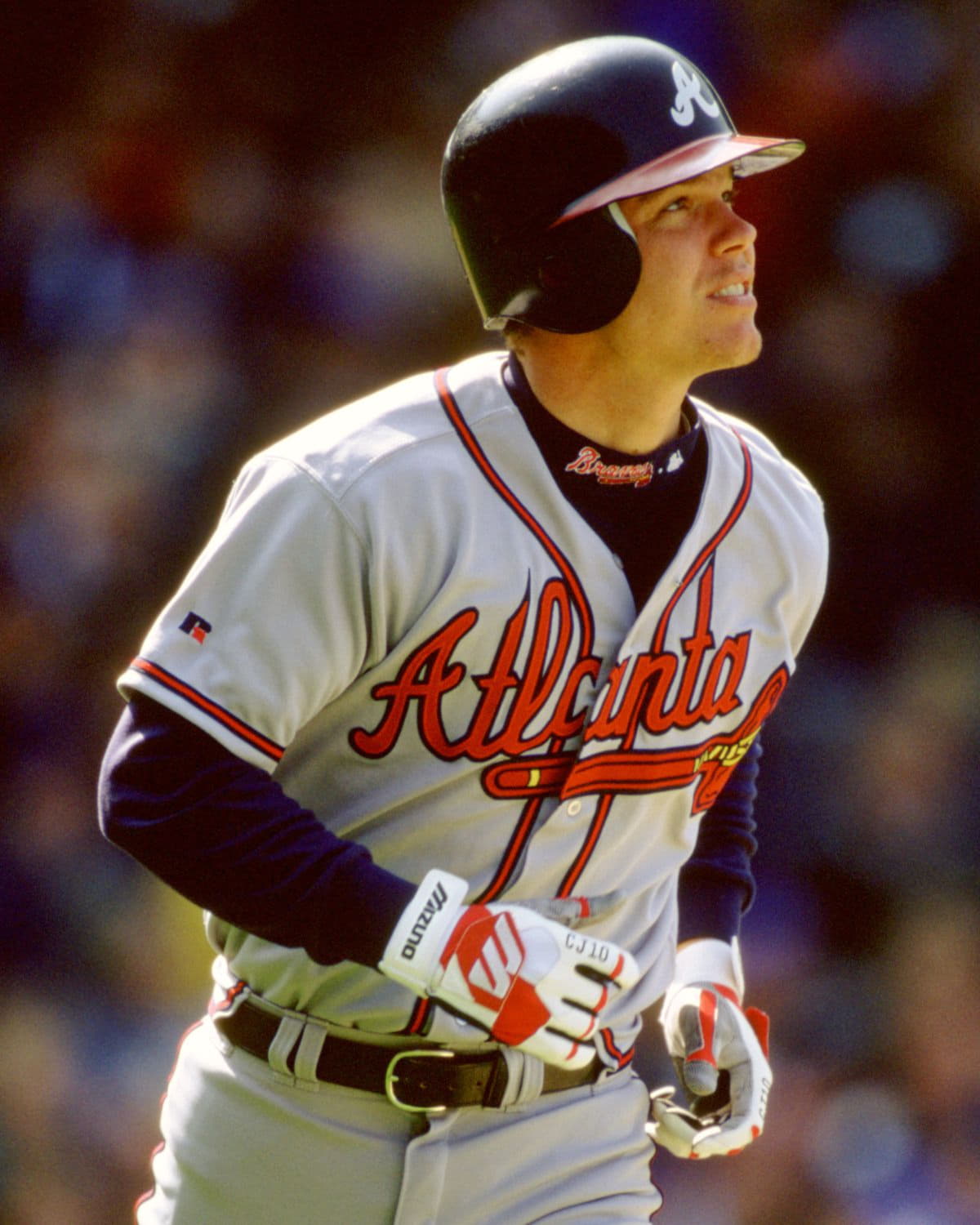
Top 5 Seasons, by HR
Chipper Jones, 1999, 45
Chipper Jones, 2001, 38
Josh Donaldson, 2019, 37
Chipper Jones, 2000, 36
Chipper Jones, 1998, 34
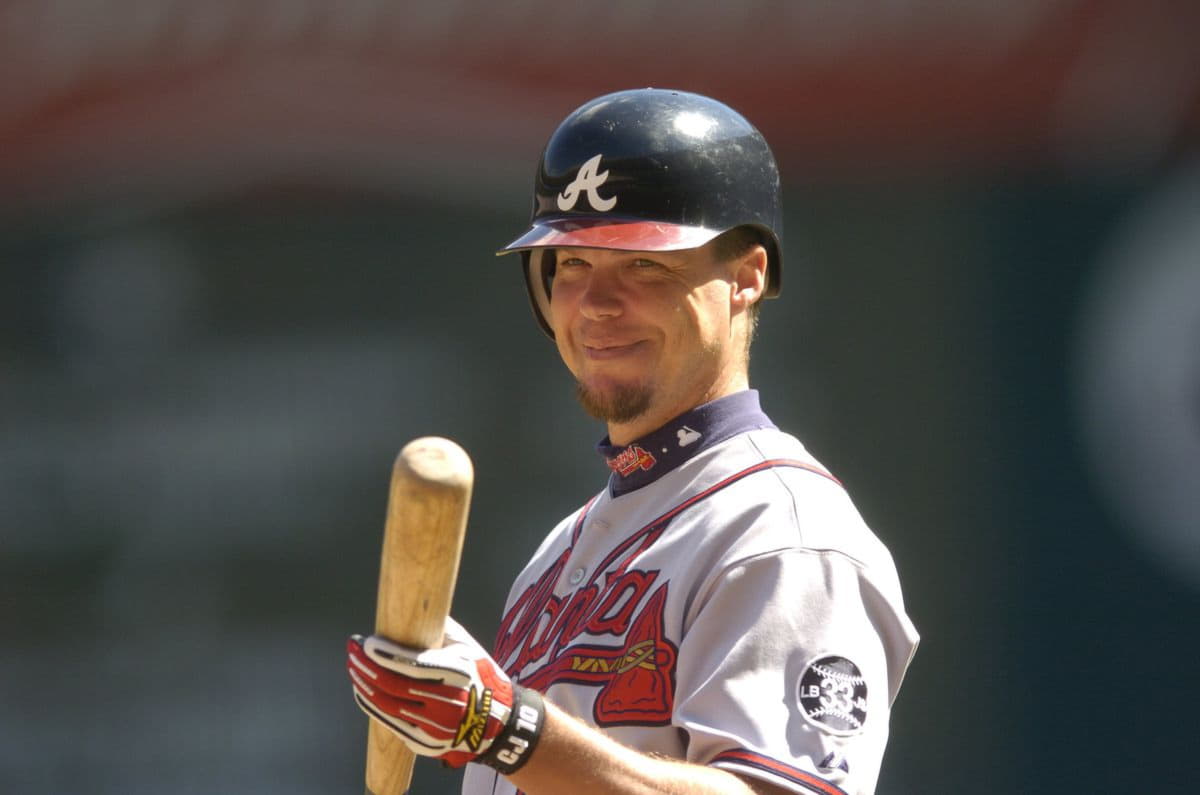
Top 5 Seasons, by 2B
Chipper Jones, 2007, 42
Chipper Jones, 1999, 41
Chipper Jones, 1997, 41
Terry Pendleton, 1992, 39
Chipper Jones, 2000, 38
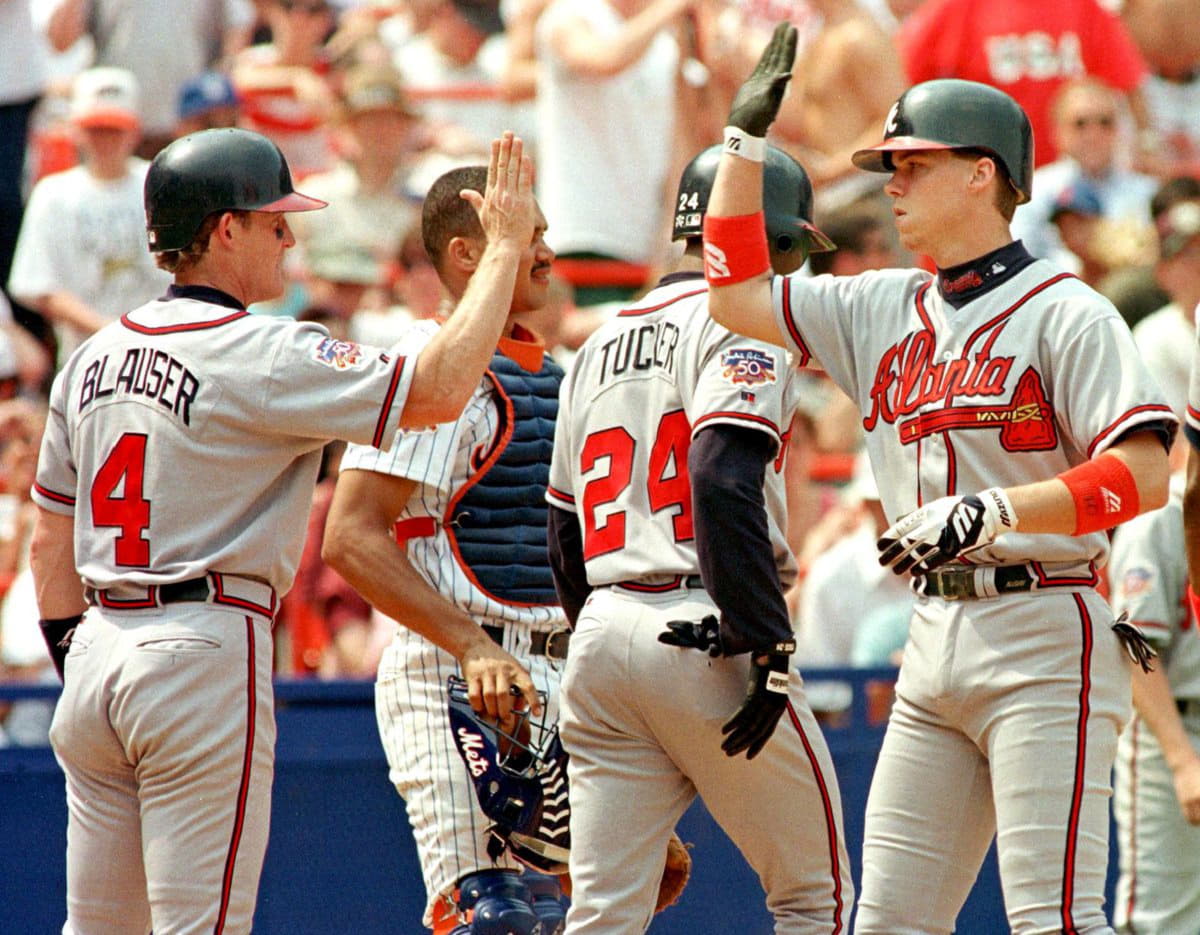
Top 5 Seasons, by RBI
Chipper Jones, 1997, 111
Chipper Jones, 2000, 111
Chipper Jones, 1999, 110
Chipper Jones, 1996, 110
Austin Riley, 2021, 107
Chipper Jones, 1998, 107
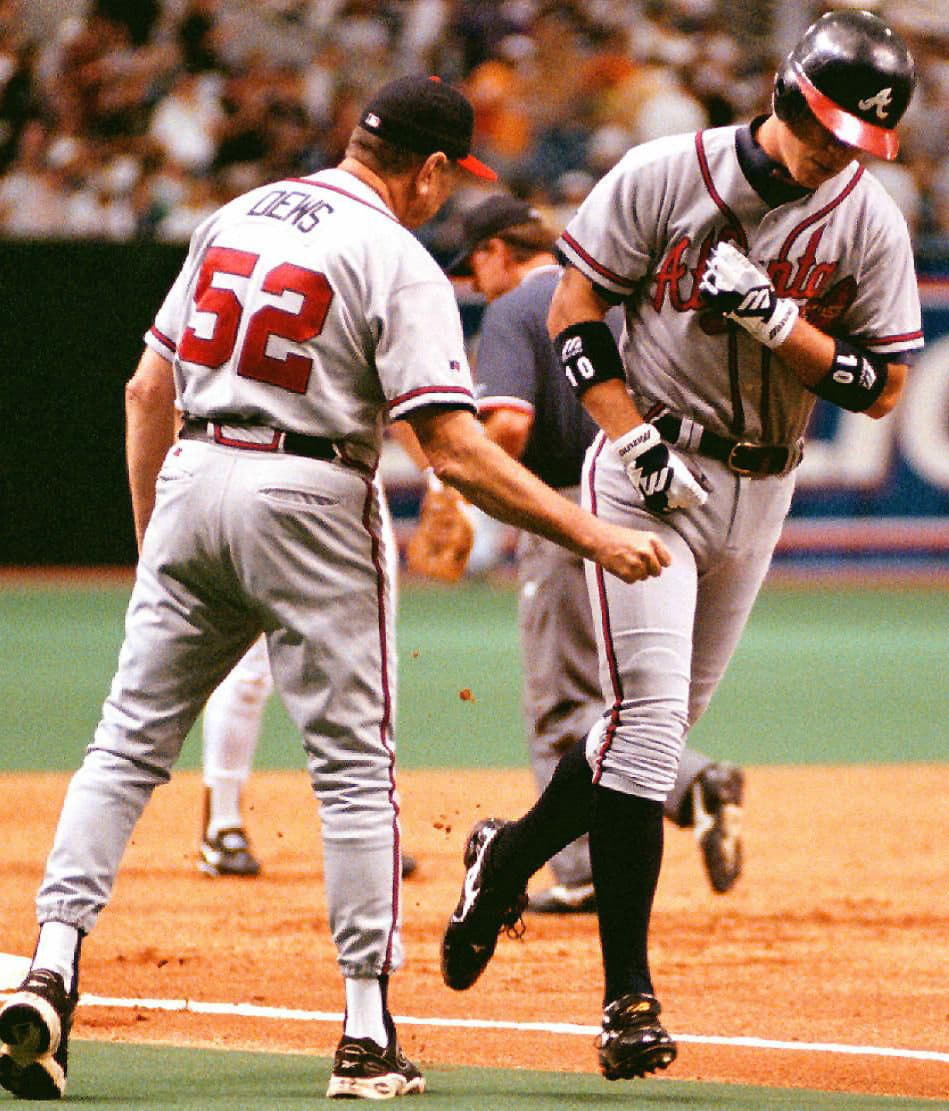
Top 5 Seasons, by Runs
Chipper Jones, 1998, 123
Chipper Jones, 2000, 118
Chipper Jones, 1999, 116
Chipper Jones, 1996, 114
Chipper Jones, 2001, 113
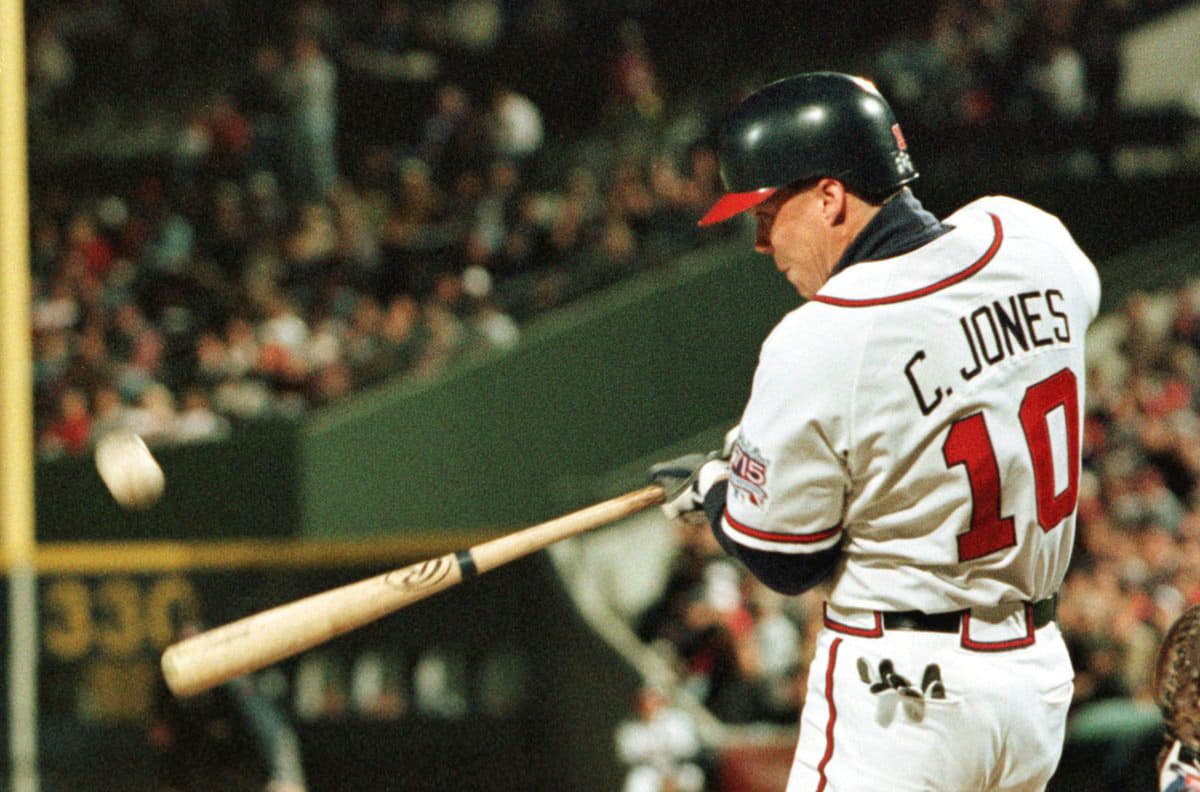
Top 5 Season, by OPS
Chipper Jones, 1999, 1.074
Chipper Jones, 2008, 1.044
Chipper Jones, 2001, 1.032
Chipper Jones, 2007, 1.029
Chipper Jones, 2006, 1.005

Top 5 Seasons, by BA
Chipper Jones, 2008, .364
Chipper Jones, 2007, .337
Chipper Jones, 2001, .330
Chipper Jones, 2006, .324
Chris Johnson, 2013, .321
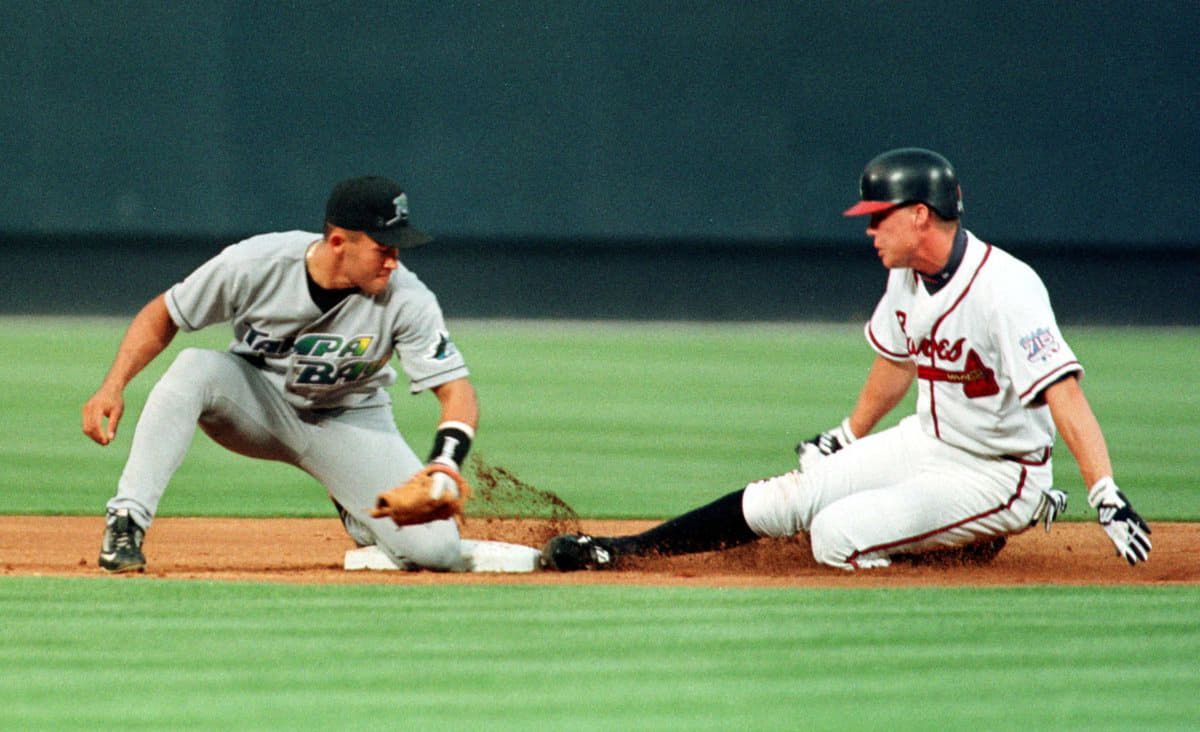
Top 5 Seasons, by SB
Chipper Jones, 1999, 25
Chipper Jones, 1997, 20
Chipper Jones, 1998, 16
Chipper Jones, 2000, 14
Chipper Jones, 1996, 14
Best Single Seasons by Decade
These are the best single seasons for third basemen per decade based on qualifying seasons only.
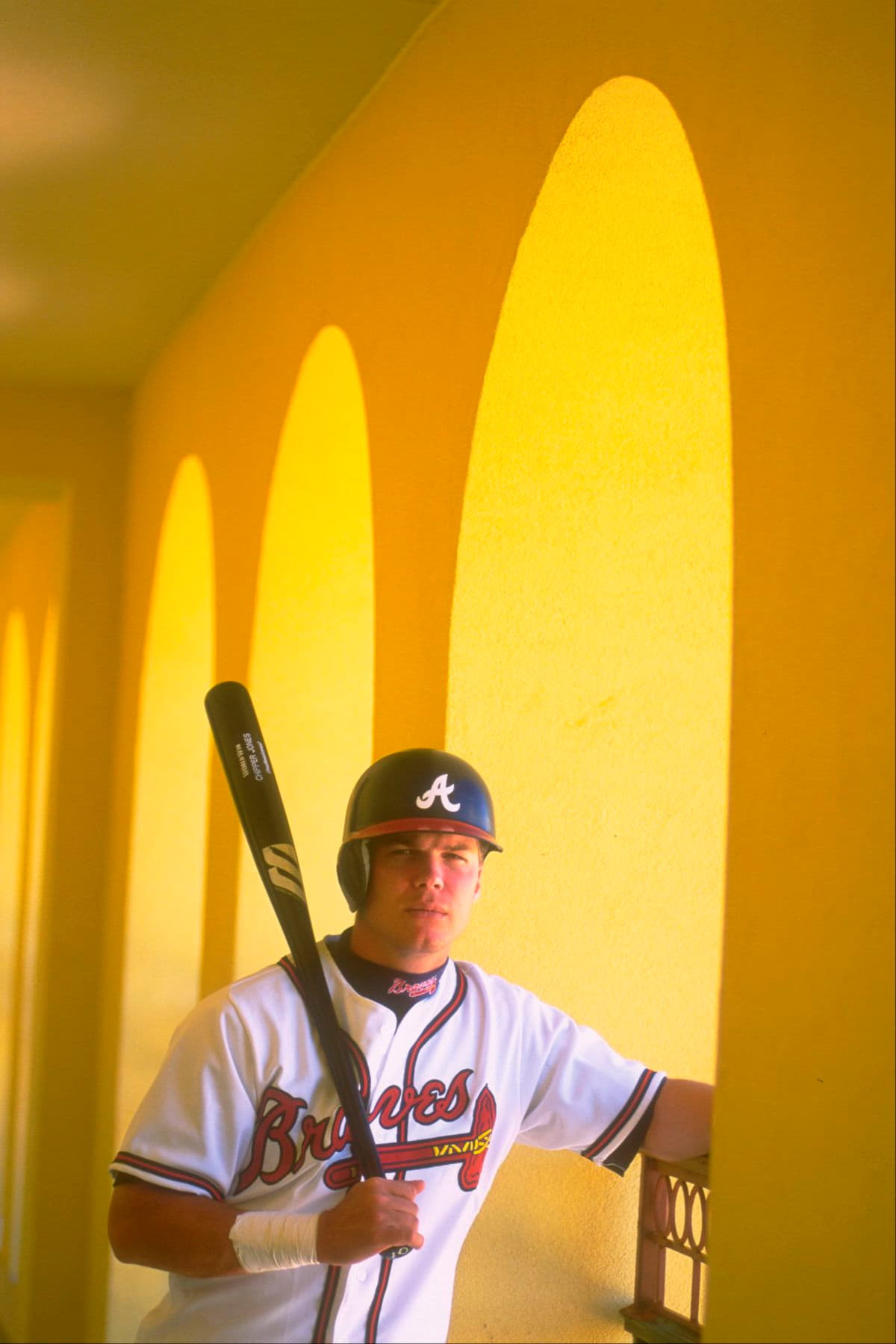
Top 5 bWAR, 1990s
Chipper Jones, 1998, 7.0
Chipper Jones, 1999, 6.9
Chipper Jones, 1996, 6.2
Terry Pendleton, 1991, 6.1
Terry Pendleton, 1992, 5.0
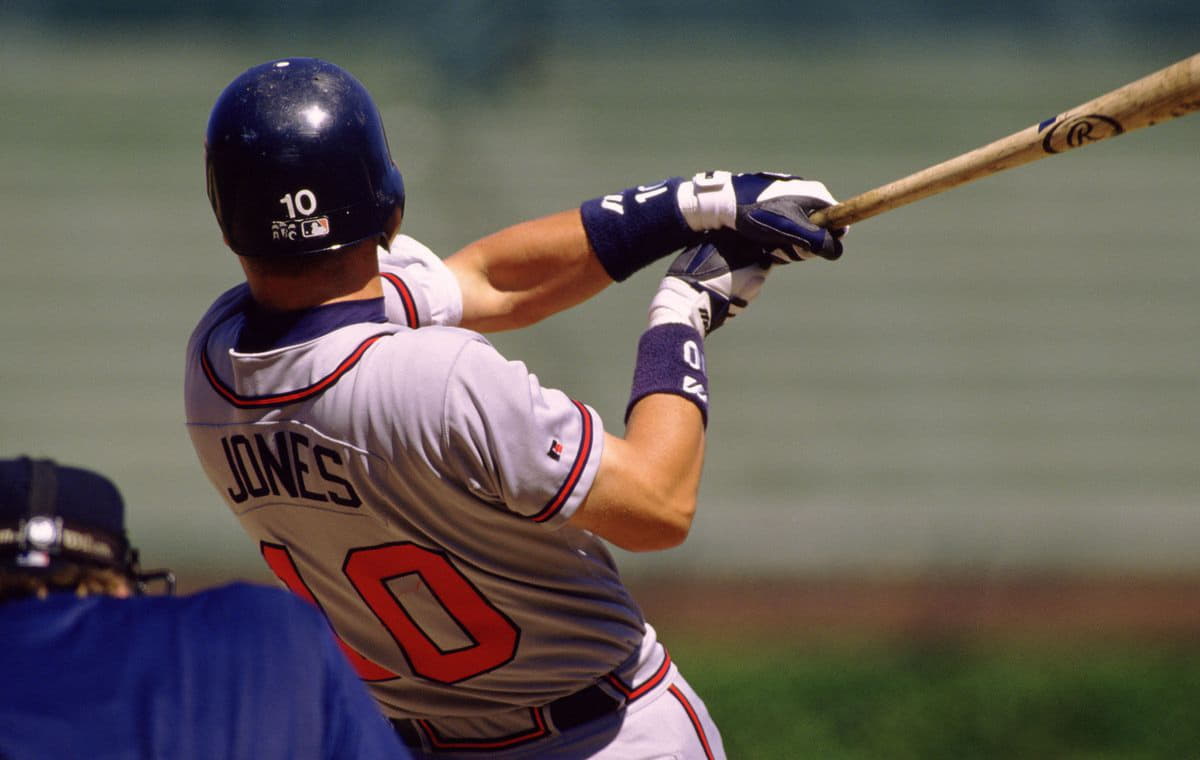
Top 5 OPS+, 1990s
Chipper Jones, 1999, 169
Chipper Jones, 1998, 148
Terry Pendleton, 1991, 139
Chipper Jones, 1996, 137
Terry Pendleton, 1992, 124
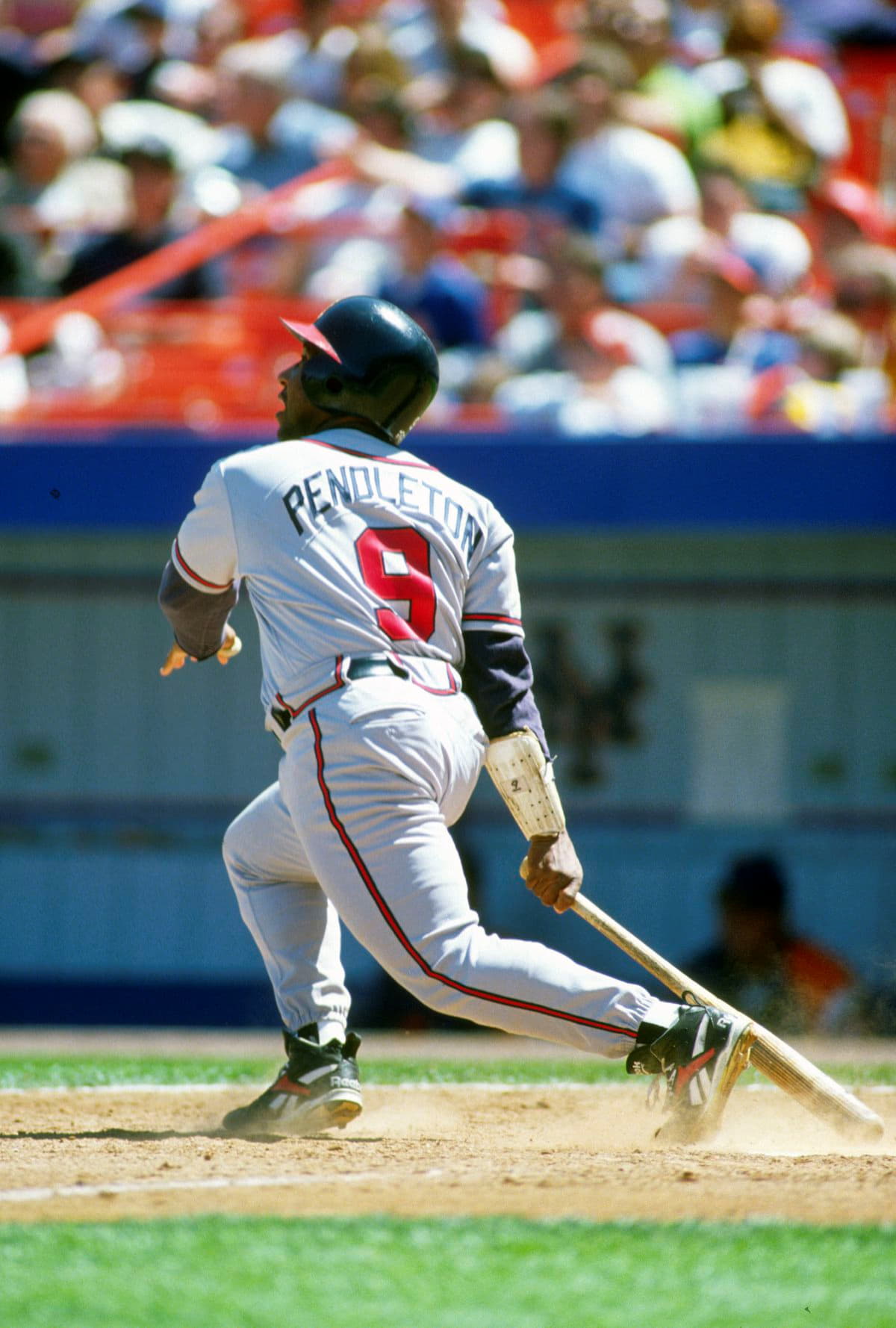
Top 5 BA, 1990s
Terry Pendleton, 1991, .319
Chipper Jones, 1999, .319
Chipper Jones, 1998, .313
Terry Pendleton, 1992, .311
Chipper Jones, 1996, .309

Top 5 2B, 1990s
Chipper Jones, 1997, 41
Chipper Jones, 1999, 41
Terry Pendleton, 1992, 39
Terry Pendleton, 1991, 34
Jim Presley, 1990, 34

Top 5 HR, 1990s
Chipper Jones, 1999, 45
Chipper Jones, 1998, 34
Chipper Jones, 1996, 30
Chipper Jones, 1995, 23
Terry Pendleton, 1991, 22

Top 5, bWAR, 2000s
Chipper Jones, 2007, 7.6
Chipper Jones, 2008, 7.3
Chipper Jones, 2001, 5.9
Chipper Jones, 2000, 5.7
Chipper Jones, 2005, 4.1

Top 5, OPS+, 2000s
Chipper Jones, 2008, 176
Chipper Jones, 2007, 165
Chipper Jones, 2001, 160
Chipper Jones, 200 atlanta braves jersey 4x 6, 154
Chipper Jones, 2005, 151

Top 5 BA, 2000s
Chipper Jones, 2008, .364
Chipper Jones, 2007, .337
Chipper Jones, 2001, .330
Chipper Jones, 2006, .324
Chipper Jones, 2000, .311

Top 5 2B, 2000s
Chipper Jones, 2007, 42
Chipper Jones, 2000, 38
Chipper Jones, 2001, 33
Chipper Jones, 2005, 30
Chipper Jones, 2006, 28
Vinny Castilla, 2003, 28

Top 5 HR, 2000s
Chipper Jones, 2001, 38
Chipper Jones, 2000, 36
Chipper Jones, 2004, 30
Chipper Jones, 2007, 29
Chipper Jones, 2006, 26

Top 5 bWAR, 2010s
Josh Donaldson, 2019, 5.4
Johan Camargo, 2018, 3.2
Chipper Jones, 2012, 2.8
Chipper Jones, 2011, 2.5
Chris Johnson, 2013, 2.5

Top 5 OPS+, 2010s
Josh Donaldson, 2019, 126
Chipper Jones, 2012, 124
Chipper Jones, 2013, 124
Chipper Jones, 2011, 121
Chipper Jones, 2010, 120

Top 5 BA, 2010s
Chris Johnson, 2013, .321
Chipper Jones, 2012, .287
Chipper Jones, 2011, .275
Adonis Garcia, 2016, .273
Johan Camargo, 2018, .272

Top 5 2B 2010s
Chris Johnson, 2013, 34
Chipper Jones, 2011, 33
Josh Donaldson, 2019, 33
Adonis Garcia, 2016, 29
Johan Camargo, 2018, 27
Chris Johnson, 2014, 27

Top 5 HR, 2010s
Josh Donaldson, 2019, 37
Johan Camargo, 2018, 19
Chipper Jones, 2011, 18
Chipper Jones, 2012, 14
Adonis Garcia, 2016, 14
Best Cumulative Qualifying Seasons
These are the best cumulative totals from qualifying season for Atlanta’s third basemen since 1990.

Top 5 bWAR, Qualifying Seasons
Chipper Jones, 74.9
Terry Pendleton, 13.6
Austin Riley, 6.1
Josh Donaldson, 5.4
Johan Camargo, 3.2

Top 5 HR, Qualifying Seasons
Chipper Jones, 415
Terry Pendleton, 67
Josh Donaldson, 37
Vinny Castilla, 34
Austin Riley, 33

Top 5 RBI, Qualifying Seasons
Chipper Jones, 1,417
Terry Pendleton, 305
Vinny Castilla, 137
Chris Johnson, 126
Austin Riley, 107

Top 5 Games, Qualifying Season
Chipper Jones, 1,992
Terry Pendleton, 544
Chris Johnson, 275
Austin Riley, 156
Josh Donaldson, 148
Youngest and Oldest Qualifiers

Top 5 Youngest
Chipper Jones, 1995, 23
Chipper Jones, 1996, 24
Johan Camargo, 2018, 24
Austin Riley, 2019, 24
Chipper Jones, 1997, 25

Top 5 Oldest
Chipper Jones, 2012, 40
Chipper Jones, 2011, 39
Chipper Jones, 2010, 38
Chipper Jones, 2009, 37
Chipper Jones, 2008, 36
A Renewed Appreciation for Chipper

If you are in a work or school meeting, and someone provides you with summary data, that can be impactful. High-level work KPIs, mid-term course grades, etc., can provide a much-needed, moment-in-time context. Often, we accept that summary information and move on with our day, informed of – but not immersed in – the details of the data.
In hand-collecting and collating data for retrospective series, there is a level of intimacy you can’t get from seeing summary output data or KPI reporting. It’s the difference between having someone else cut your lawn and doing it yourself. It is a heckuva lot more work, but you know where every root, every hole, every rock is in your yard.
Most people probably don’t care about such things. I am not most people.
I was at Chipper Jones’ first game as the Braves starting third baseman on Opening Day 1995 in Atlanta-Fulton County Stadium. I was at Chipper Jones’ last game as a Brave, the Wild Card play-in game loss in 2012 at Turner Field. In between, he had a Hall of Fame career, and ten years after his retirement, the statements of, “Chipper Jones, Hall of Famer” and “Chipper Jones is the best positions player since the Braves moved to Atlanta” have become inarguable facts.
But they don’t tell the whole story.
Neither does manually putting numbers in a spreadsheet, but that exorcise does underscore how truly fantastic his career was – and poses a few questions about what more he might have been able to accomplish had an ill-fated position change and injuries not impacted his career.
As both the youngest and oldest primary third baseman since 1990, Jones’ career longevity is notable. Across parts of 19 seasons, Jones produced 84.8 fWAR/85.3 bWAR. He was a league MVP, World Series Champion, a Silver Slugger, an All Star and won a batting title. He was elected to the Hall of Fame in his first year of eligibility with 97.2-percent of the vote.
There’s no doubting that he was an all-time great.
Despite never leading the league in any major counting stats, he produced 2,726 career hits, scored 1,619 runs, drove in 1,623, belted 468 home runs, walking more than he struck out, and producing a triple-slash career line of .303/.401/.529 good for an .930 OPS and 141 OPS+.
The only times he led the National League in any categories – OPS and OPS+ in 2007 and batting average and OBP in 2008 – he was 35 and 36 years old, respectively.
Wow.
Despite playing in 2,499 games in his career, he lost the strike-shortened 1994 season to a knee injury suffered in Spring Training and played in more than 140 game only one season after 2003 (his age 31 season).
Across the final nine seasons of his career, Jones Matt Chapman Blue Jays Jerseys averaged less than 126 games per season or basically 30 games fewer than he did in the first nine full-time seasons of his career.
While it might be unreasonable to expect someone to remain a 155+ game-per-season player through their 30s, the decline Jones saw started after the two seasons he spent playing left field is notable.
In December 2001, the Braves signed Vinny Castilla, bringing back their former prospect to man third base, shifting Jones to left field in the process. Castilla had bounced between two organizations the prior two seasons, but had been a two-time All Star and Silver Slugger during a seven-year run in Colorado that ended in 1999.
Castilla struggled mightily with the Braves in 2002 putting up the worst bWAR of his career with -1.1 for the season. While his defensive was a slight upgrade over Jones, offensively, he was well below average posting a 60 OPS+. Although he would rebound in 2003 with a roughly league-average offensive output with solid defense, the Braves let him leave via free agency after the 2003 season.
The Braves remained committed to the Chipper Jones-in-left experiment to start the 2004 season, with Mark DeRosa starting at third base for the team coming out of Spring Training. That lasted until June 2nd, when Jones replaced the struggling DeRosa at third, where he remained the primary third baseman for the rest of his career.
Jones’ move back to third was also precipitated due to his own hamstring injury suffered in late April, which continued to plague him. He actually spent time taking pre-game drills at first base before his move back to the hot corner, as the team tried to shore up its infield defense and find a way to key Jones’ bat in the line-up.
As he told Ronald Blum of the Associated Press around the time of his positional change, “I’ve sacrificed for this team a lot over the years, moving positions and doing what I and Bobby (Cox) think are best for the team. Now I’m the one in need of a position change, just to stay healthy.”
Although Jones’ run in left field produced his typical premium offensive output, he was a below average fielder, with the extra wear-and-tear on his lower body impacting him the rest of his career.
The idea of the offensive numbers Jones may have been able to produce had he not missed almost 400 games during his career is thought provoking. The thought of even an addition 200 games being added to his career begins to bring to light the possibility of 3,000 career hits and 500 career home runs.
Would that have made any difference on how the career of Chipper Jones is viewed? Probably not for Braves fans, but would those two milestone number have cemented his status in the inner sanctum of the Hall of Fame within the game itself? We, unfortunately, will never know.
Reviewing his season-by-season numbers closely does highlight just how sensational of a player he was during a career that saw him receive votes for NL MVP in twelve seasons -ranging from 1995 to 2012 – and meet, or exceed, 5.9 fWAR eight times.
Notable Tidbits

Here’s a look at some of the interesting notes for third basemen since 1990.
Austin Riley only qualified for this ranking in his 2021 season but his 2022 season is on pace to equal or surpass his productivity in ‘21. If he is able to repeat that feat again in 2023 – which the Braves are obviously banking on given his $212M contract extension – then he will move into second place in this ranking overtaking Terry Pendleton.Speaking of “TP”, the former long-time Braves coach’s 1991 and 1992 seasons can easily be overshadowed by the production Chipper Jones provided beginning in the last-half of the ‘90s, but Pendleton’s impact to the Atlanta organization shouldn’t be minimized.Pendleton’s first two seasons in Atlanta combined output of 11.1 bWAR underscored his 1991 NL MVP Award and his second place finish in 1992. Retrospectively, it is easy to look back and wonder how Pendleton won in ‘91 over Barry Bonds (who won the ‘92 MVP). The story of the Braves seasMLB Jerseyson – and the career resurrection of Pendleton after struggling in St. Louis – certainly played a role but shouldn’t negate how excellent his overall contributions to the team were that season.Pendleton was renowned for his defensive acumen prior to signing with Atlanta – a big part of the changes the organization made prior to the season to upgrade their infield defense. For his career, he provided 13.5 dWAR in value, with 2.5 of that coming with Atlanta – although that number increases to 2.9 dWAR when you exclude a 40+ game run he had after returning to the team in 1996.In parts of five seasons with Atlanta, Pendleton posted a 107 OPS+, by far the best numbers he put up for any of the five teams with which he spent time during his 15 year career.

One last note on Pendleton, going back to his 1991 season. In 1990, the last of nine seasons he spent in St. Louis, he mustered only a .230/.277/.324 slash line food for a .601 OPS and 65 OPS+. For Atlanta in ‘91, those marks soared to .319/.363/.517 for an .880 OPS and 139 OPS+ as he led the NL in hits, batting average and total bases. That earned Pendleton the Sporting News NL Comeback Player of the Year award along with the previously mentioned NL MVP award..Preceding Pendleton at third was Jim Presley in 1990. Presley was acquired from Seattle prior to Spring Training, but lasted only a single-season in Atlanta. An All Star as a 24 year-old in 1986, he was unable to regain the productivity he showed early in his career with Seattle and the change of scenery didn’t prove to jump-start his career. Presley had a 20 game stint with San Diego in 1991 but was out of baseball after spending 1992 in AAA for the Texas Rangers.Presley’s -1.8 bWAR in ‘90 was the worst of any qualifying third baseman for Atlanta since 1990. He wasn’t alone in producing negative results at the position. Despite the overall incredible production by third basemen through the decades, four other qualifying third baseman posted negative bWAR numbers. Vinny Castilla (2002), -1.1bWAR; Mark DeRosa (2004), -1.1bWAR; Chris Johnson (2014), -0.50; and Adonis Garcia (2016), -0.2 bWAR round out that list.Although 2020 is not part of this ranking, Austin Riley also posted a -0.6 bWAR in that pandemic-shortened season. The player to come closest to qualifying for this ranking – but just missing out – was Wilson Betemit when he played in 63 games, starting 46, at third in 2005 as he filled in as Chipper Jones missed time due to injury.No player qualified in 2015 and 2017.In 2015, the Braves had nine different players spend time at third base, led by Garcia and Juan Uribe with 42 games each. Alberto Callaspo, Pedro Ciriaco, Chris Johnson, and Hector Olivera all spent more than 20 games at third that season. Kelly Johnson, Daniel Castro, and Phil Gosslin also saw action at the hot corner. In 2017, the Braves again used nine different players at third base, with Johan Camargo, Rio Ruiz and Garcia playing 39 games or more at the position. Among the other players to see time at the position that season were Brandon Phillips, Jace Peterson, Sean Rodriquez, Danny Santana, and Chase d’Arnaud.

The best third baseman the Braves used in 2017 was not listed above. That honor belonged to Freddie Freeman, who move to third base after returning from injury because of the productivity Matt Adams has provided while filling-in for Freeman at first base. After 16 games, Freeman moved back to first, but proved to be more-than-competent at that the position during 136 inning.Only two qualifying players failed to exceed 10 home runs during any single season (DeRosa in 2004 and Pendleton in 1994).Mark DeRosa carved out a 16 year career in MLB as a utility player that included appearing in 136 or more games in four consecutive seasons for four different teams in the late 2000s. But his 2004 season – his last with Atlanta – was amongst the worst of his career, when he posted a 59 OPS+, the worst of any season in which he appeared in 65 games or more.Collectively, third basemen produced 102.9 bWAR in qualifying seasons since 1990. That includes 38.5 bWAR in the ‘90s, 40.2 bWAR in the ‘00s, 18.1 bWAR in the ‘10s and 6.1 bWAR from Austin Riley’s 2021 season.Chipper Jones provided 74.9 bWAR as a third baseman or 73-percent of the total bWAR in this ranking.Since Jones stole nine bases in 2001, no third baseman has stolen as many as seven bases in any season.From 1991 to 2001, Braves third basemen stole more than seven based eight times – seven of those times were by Jones.Only four third basemen qualified in two or more seasons: Jones (16), Pendleton (4), Johnson (2), and Vinny Castilla (2).
Between Chipper Jones and Eddie Mathews, the Braves have had two of the best offensive third basemen in MLB history.
ThJ.T. Realmuto e whole of their careers are remarkably similar with Jones’ career stretching out three years lonJuan Soto ger than Mathews, but with Jones only playing in 108 more games because of injuries. They each totaled more than 10,000 plate appearances with an OPS+ exceeding 140 for their careers.
Offensively, there is an argument to be made on who the offensive player was during their career. Jones output was slightly better; but Mathews was a bit better when adjusted for era. Defensively, Mathews was a notch or two (or three) above Jones as a fielder.
Jones – with almost six-times more post-season games played than Mathews – was an excellent playoff performer. In 93 career post-season games, Jones slashed .287/.409/.456, totaling 97 hits, 13 home runs, 58 runs scored, and 47 RBI – with a career WPA of 0.41. Interestingly, his cWPA was only -1.7-percent, but that rose to 6.1% in 16 World Series games.
Mathews only appeared in 16 post-season games, but those were all in the World Series, two of which game with the Tigers in 1968. Although his slash numbers were not overly impressive -.200/.385/.360 – his WPA was 0.40 and his cWPA was 29.6-percent, including an outstanding 39.7-percent in the 1957 World Series.
This isn’t a debate of which of these two legendary Hall of Famers is better but an appreciation that two different generations of Braves fans were able to spend 15 years (or more) watch two players whose legendary on-field production was remarkably similar.
Braves News: Braves go down quietly in game two, Ronald Acuña Jr. remains out, more Tough matchup plays out as expected as Braves lose 9-1 to Phillies Braves @ Phillies GameThread: 9/23/2022 Ronald Acuña Jr. remains out, Michael Harris II moves up to second as Braves take aim at Aaron Nola Braves look to bounce back Friday against the Phillies Braves Minor League Recap: Justyn-Henry Malloy keeps hitting More From